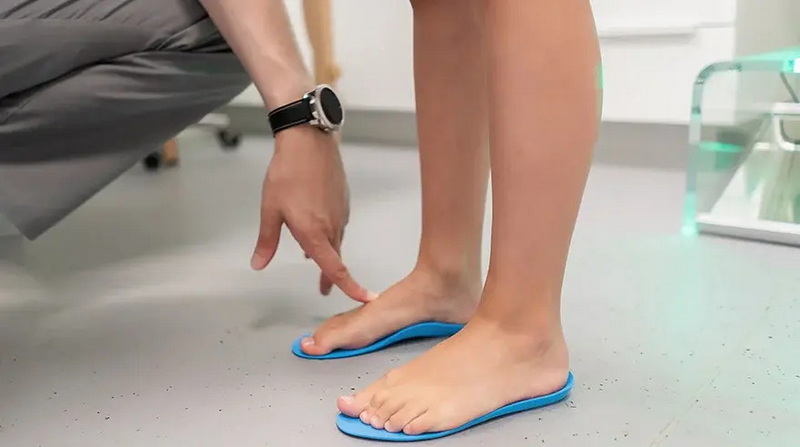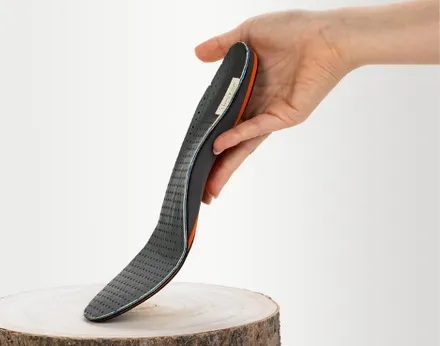Views: 222 Author: Edvo Publish Time: 2025-11-14 Origin: Site











Content Menu
● What Are Custom Orthotic Insoles?
● Who Should Use Custom Orthotic Insoles?
● Key Drivers of Cost for Custom Orthotic Insoles
>> Material Quality and Technological Integration
>> Precision and Customization
>> Labor, Expertise, and Aftercare
>> Regional and Market Variables
● How Are Custom Orthotic Insoles Made?
>> 1. Biomechanical Assessment and Foot Imaging
>> 2. Digital or Physical Modeling
>> 5. Shaping, Trimming, and Assembly
>> 6. Quality Control and Fitting
● Why the Investment in Custom Orthotic Insoles Is Worthwhile
>> Superior Comfort and Clinical Outcomes
>> Enhanced Functional Longevity
>> Potential for Insurance Reimbursement
● User Experience: Making the Most of Your Custom Insoles
>> Consultation and Provider Selection
>> Adapting to Your New Insoles
● Market Developments and Future Outlook
● FAQs About Custom Orthotic Insoles
>> 1. How are custom orthotic insoles made?
>> 2. Do health insurance plans cover custom orthotic insoles?
>> 3. How long do custom orthotic insoles last?
>> 4. Can you use custom orthotics with different shoes?
>> 5. What are the risks of not using custom orthotics when needed?
Custom orthotic insoles have become one of the most valued investments for individuals seeking optimal foot comfort, pain relief, and biomechanical correction. As people around the world become more attuned to health and wellness, the importance of individualized solutions for chronic issues, athletic performance, and preventive care is clearer than ever. This comprehensive guide explores the costs, manufacturing intricacies, practical considerations, and the enduring value that custom orthotic insoles offer—helping global customers make an informed, confident purchase.

Custom orthotic insoles are precisely engineered shoe inserts manufactured to fit the unique contours and functional needs of an individual's feet. Unlike generic over-the-counter insoles, custom orthotics are formulated through clinically guided assessments and are tailored to resolve medical, structural, or performance issues. The benefits extend well beyond comfort: they directly address problems such as plantar fasciitis, arthritis, repetitive sports injuries, and even diabetic foot complications, providing relief where typical insoles cannot.
People of all ages and activity levels may benefit from custom orthotic insoles, particularly those who:
- Experience persistent foot or heel pain
- Have abnormal foot structure (flat feet, high arches, pronation)
- Suffer from chronic lower back, knee, or hip pain caused by improper gait
- Undergo repetitive stress from sports, work, or prolonged standing
- Live with diabetes and require specialized foot protection
Orthotic solutions are not reserved for injury recovery alone—they enhance balance and stability, improve posture, and help active individuals push their limits safely. For children, timely orthotic intervention can support optimal foot development, while seniors benefit from increased stability and fall risk reduction.
The primary factor influencing the price of custom orthotic insoles is material choice. High-quality ethylene-vinyl acetate (EVA) foam, thermoplastic, medical-grade carbon fiber, and even memory foam are common materials, each offering specific advantages in cushioning, resilience, and strength. Advanced insoles may integrate sensors that analyze gait and provide feedback, pushing the upper bound of the price spectrum.
True custom orthotics require a deep investment in clinical assessment and bespoke design. Podiatrists or pedorthists assess biomechanics through detailed examination, pressure mapping, or 3D scanning. The more elaborate and individualized the assessment and design process, the more resources are required, which is reflected in the final cost.
Designing and making a pair of custom orthotic insoles is labor-intensive. The process involves trained professionals, from assessment to manufacture, to ongoing fitting and follow-up. Many clinics include aftercare—adjustments, refurbishing, and even warranty services—which adds long-term value for the user and is factored into pricing.
Prices can vary by country, region, or even city. In mature markets, higher operational costs, insurance, and access to advanced technologies can increase pricing. Some countries or regions also regulate orthotic manufacturing tightly, adding compliance and certification costs.
Creating genuinely custom insoles involves a painstaking, multi-stage procedure that demonstrates the difference between premium and generic products. Here's a step-by-step look at the process:
A thorough foot analysis is conducted, encompassing movement evaluation, static posture, and pressure points. Modern clinics utilize 3D scanners or pressure mats that generate a detailed digital model of each foot, while some specialists still employ foam impression boxes or plaster casts for accurate molding.
Using either a plaster mold or digital data, a physical or virtual model of the foot is produced. Advanced CAD (computer-aided design) software allows technicians to create precise 3D representations to ensure meticulous correction or support.
The practitioner selects materials aligned with the patient's needs. Soft EVA might be chosen for cushioning and shock absorption, while rigid polypropylene offers stability for more significant alignment correction. Certain patients, such as athletes, may need a balance of flexibility and support, looser materials for increased comfort, or antimicrobial cotton top liners for moisture control.
For EVA and similar foams, a block of material is milled using CNC (computer numerical control) machines, following the 3D model. In the case of thermoplastics or composites, vacuum-forming over the mold ensures the insole's base precisely matches the patient's foot. The base layer is crafted, with possible additions for extra cushion or reinforcements at high-impact zones.
Technicians cut, grind, and sand the insole for a smooth finish and exact fit. Layers may be bonded, and surface textures or top covers added for comfort and moisture management. Rigid elements, posts, or wedges might be inserted to target corrective effects for severe gait issues.
The insoles are tested for fit and finish. At delivery, a specialist checks comfort, mobility, and functional goals in various shoes. Follow-up appointments ensure that insoles deliver intended benefits, and any fine-tuning is carried out for individualized perfection.
Custom insoles alleviate strain on ligaments, joints, and muscles, improving every stride. For those with plantar fasciitis or diabetic neuropathy, these insoles redistribute pressure and actively prevent painful ulcerations or further injury. Over time, many users report increased daily activity, less fatigue, and heightened mobility.
Although custom orthotics require a higher initial investment, they typically outlast generic insoles and can be resurfaced or adjusted to extend usefulness. Many products hold functional integrity for 2 to 4 years, depending on usage, materials, and foot growth in children.
While the cost can seem formidable, various health or supplementary insurance plans acknowledge the medical necessity of prescription orthotics for certain diagnoses and may subsidize a significant portion of the expense. Patients should inquire about eligibility, required documentation, and approved providers.

Seek experienced, reputable clinicians or providers who offer full biomechanical assessment, detailed explanations, and warranty support. Ask about the variety of materials, turnaround time, and aftercare policies, as these directly affect product satisfaction.
Most users adapt to custom orthotics within a few days to weeks. Gradually extending wear time allows muscles and ligaments to adjust to the improved biomechanics. Some minor soreness can occur initially, but proper fitting should resolve any lasting discomfort.
- Remove insoles regularly to air dry and avoid moisture buildup.
- Clean gently with mild soap and water as needed; avoid exposure to direct heat.
- Watch for signs of wear such as compressed foam, detached top covers, or persistent loss of support. Consult your provider regarding adjustments or replacement.
Continual innovation in digital imaging, AI-driven gait analysis, and environmentally friendly materials is shaping the future of orthotic manufacture. Direct-to-consumer models are gaining momentum, where users self-scan their feet via smartphone applications and receive insoles through the mail, further democratizing access to high-quality custom solutions.
As awareness of preventative care and proactive wellness grows globally, the demand for custom orthotic insoles is set to surge, capturing the attention not only of medical communities but also of athletes, office workers, and consumers in need of daily comfort.
Custom orthotic insoles are a powerful blend of science, craftsmanship, and technology, delivering life-changing support for anyone seeking relief from foot pain, improved posture, or enhanced athletic potential. Their price range, typically from $200 to $800, reflects carefully calibrated materials, expert labor, and multi-stage customization—making them a wise investment in overall wellbeing. Careful selection and proper care guarantee long-lasting benefits, and as technology advances, these insoles will continue to become even more effective, durable, and widely accessible.

Custom insoles are carefully crafted through a process that starts with a detailed biomechanical assessment and foot imaging. The ensuing 3D model or plaster cast is used to fabricate an insole uniquely tailored to the individual, followed by meticulous shaping and quality checks.
Many insurance plans offer partial or full coverage for custom orthotics prescribed for medical conditions. Coverage typically depends on a provider's justification and the insurer's policy, so it is important to confirm your benefits before purchase.
Most custom orthotics persist for two to four years, subject to daily use, material durability, and wearer habits. Some clinics offer resurfacing or alterations which can further extend their useful lifespan.
Custom insoles are generally versatile and may be swapped among various appropriate shoes. However, for specialized footwear (e.g., heels, narrow dress shoes), users may need additional pairs specifically fitted for those styles.
Relying on standard insoles can lead to unresolved pain, improper biomechanics, and recurrence or aggravation of foot and musculoskeletal issues. For those with diagnosed conditions, custom options are recommended for sustained relief and preventive care.